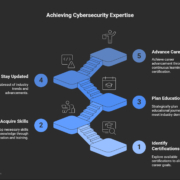E-Learning Progress Monitoring for Student Success
As education continues to embrace digital transformation, e-learning has become an essential part of the modern classroom. Whether students are learning in a fully online environment or through a blended model, teachers and parents need effective ways to measure academic growth. That’s where e-learning progress monitoring plays a critical role.
By using digital tools and data-driven insights, schools can track learning outcomes in real time, identify areas where students need help, and ensure that every learner stays on the path to success.
What Is E-Learning Progress Monitoring?
E-learning progress monitoring is the systematic process of tracking and evaluating student performance through online platforms and digital tools. Unlike traditional progress checks that rely on exams or end-of-term grades, e-learning allows educators to monitor learning continuously and in real time.
This can include:
- Tracking quiz and assignment performance.
- Measuring time spent on activities and lessons.
- Identifying strengths and weaknesses in specific topics.
- Providing immediate feedback for faster improvement.
Platforms like the Progress Learning Platform and Clever Portal have made this process seamless, helping schools transition smoothly into digital-first education.
Why Progress Monitoring Matters in E-Learning
1. Early Identification of Struggles
In a digital environment, students might feel lost without direct teacher interaction. Progress monitoring tools highlight weak areas early so interventions can be made before gaps widen.
2. Personalized Learning Paths
Every learner has a unique pace. With e-learning progress monitoring, educators can create customized learning journeys, ensuring advanced learners are challenged while struggling students receive extra support.
3. Real-Time Feedback
Instead of waiting weeks for results, students and parents receive instant updates on performance. This helps learners understand mistakes quickly and work toward improvement.
4. Motivation Through Visible Growth
Students often feel more motivated when they can see their own progress. Digital dashboards and progress charts make achievements visible and rewarding, encouraging consistent effort.
5. Data-Driven Teaching
Teachers can use progress data to adjust lesson plans, assignments, and assessments. This ensures instruction is always aligned with the needs of the class.
Tools for E-Learning Progress Monitoring
Several digital platforms now support real-time monitoring of student success. Some of the most effective include:
- Progress Learning Platform: Provides detailed dashboards, personalized lessons, and real-time student tracking.
- Clever Portal: Simplifies access to apps and ensures seamless integration of learning tools.
- Google Classroom & Microsoft Teams: Widely used for managing assignments, tracking submissions, and offering teacher feedback.
- Learning Management Systems (LMS): Centralize attendance, grades, and resources for schools and universities.
Benefits for Stakeholders
For Students
- Clear visibility of their progress.
- Immediate feedback and targeted practice.
- Increased confidence and motivation.
- Access to resources anytime, anywhere.
For Teachers
- Saves time with automated grading and reporting.
- Identifies struggling students early.
- Provides data for differentiated instruction.
- Simplifies classroom management in digital spaces.
For Parents
- Transparent insights into their child’s academic growth.
- Ability to support learning at home with clear direction.
- Regular updates instead of waiting for report cards.
Real-World Example
A high school science teacher noticed students consistently struggled with physics concepts. Using an e-learning progress monitoring tool, the teacher identified specific areas of weakness and adjusted lessons accordingly.
By providing targeted practice through the platform and tracking student responses, overall test scores improved by 20% within a few weeks. Parents also received progress updates, enabling them to reinforce learning at home.
Long-Term Impact of E-Learning Monitoring
Progress monitoring isn’t just about grades—it builds lifelong learning habits. Students who grow up with progress monitoring tools tend to:
- Develop better self-awareness.
- Learn goal-setting and accountability.
- Build resilience through continuous feedback.
- Transition more smoothly to higher education and professional careers.
For schools, adopting e-learning progress monitoring means creating a data-driven culture that prioritizes student success at every stage.
Challenges and Considerations
While progress monitoring in e-learning is powerful, schools must address:
- Digital Divide: Ensuring all students have access to devices and internet.
- Teacher Training: Educators must be equipped to use monitoring tools effectively.
- Data Privacy: Student performance data must be protected.
- Balance: Too much monitoring can lead to pressure; systems must support growth without overwhelming students.
Final Thoughts
E-learning progress monitoring is more than a trend—it’s a necessity for modern education. By combining technology, real-time data, and personalized learning, it ensures students stay engaged, teachers save time, and parents stay informed.
Platforms like the Progress Learning Platform and Clever Portal make this process smarter, easier, and more effective, ensuring no learner is left behind.
As education continues to move forward, progress monitoring will remain a cornerstone of digital learning, helping schools create an environment where every student can succeed.










Leave a Reply
Want to join the discussion?Feel free to contribute!